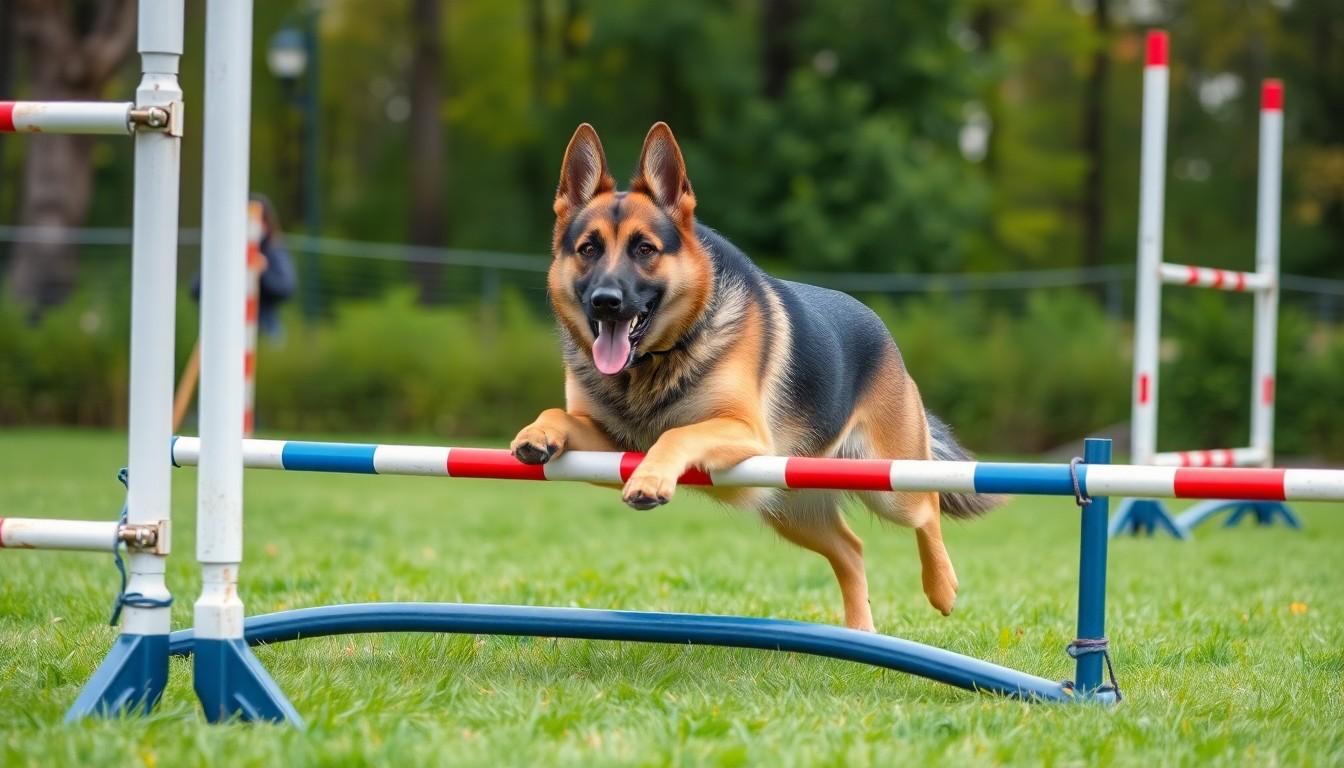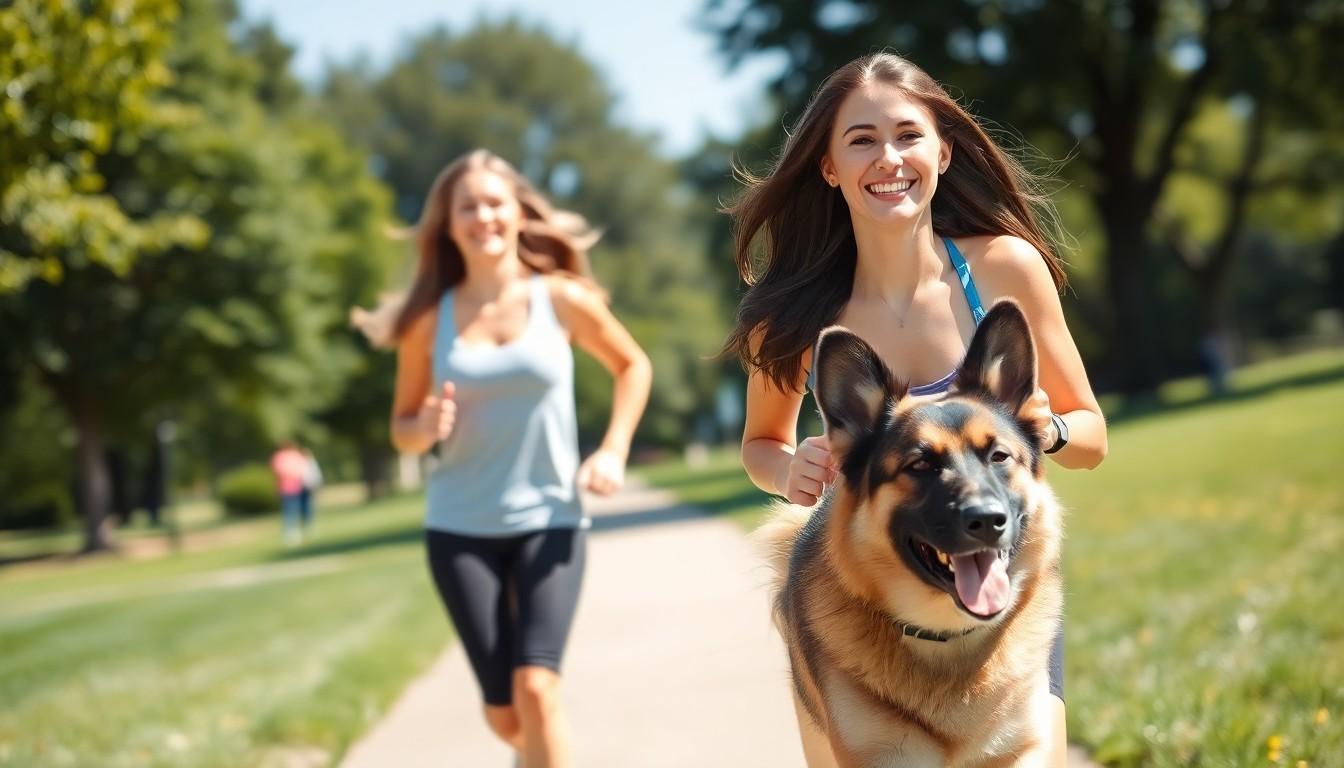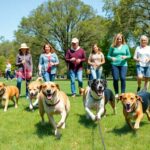German Shepherds are like the superheroes of the dog world—loyal, intelligent, and always ready for action. But just like any hero, they need their daily dose of exercise to keep their powers in check. Ever seen a bored German Shepherd? It’s not pretty. They can turn into furry tornadoes of chaos, leaving a trail of chewed shoes and overturned furniture in their wake.
Understanding German Shepherd Exercise Needs
German Shepherds require substantial exercise to thrive, typically needing one to two hours of physical activity daily. Physical demands arise from their working dog background. Regular walks, playtime, and training sessions provide mental stimulation, which is crucial for this intelligent breed.
Activities beneficial for German Shepherds include running, hiking, and agility training. Such exercises prevent boredom and structure their time effectively. Engaging them in games like fetch or frisbee offers both physical and bonding opportunities.
Outdoor experiences are important, but mental engagement also plays a significant role. Puzzle toys or obedience training sessions challenge their minds. Structured activities that encourage problem-solving can reduce destructive behaviors commonly associated with boredom.
Crucially, age influences the level of exercise required. Puppies under 1 year old need less strenuous activity since their bones are still developing. Older German Shepherds benefit from shorter, low-impact exercises, which maintain mobility without overexertion.
Weather conditions should factor into the exercise routine as well. Hot or cold temperatures may require adjustments to outdoor activities. Indoor play sessions become alternatives when the weather isn’t conducive to outdoor exercise.
Incorporating variety into the exercise routine can enhance overall well-being. Mixing different activities keeps German Shepherds motivated and engaged. Sufficient exercise not only maintains their physical health but also strengthens their emotional bond with their owners, leading to a happier, well-adjusted dog.
Types of Exercise for German Shepherds

German Shepherds thrive on a variety of exercises that promote physical health and mental engagement. Incorporating both physical activities and mental stimulation can significantly enhance their quality of life.
Physical Activities
Running ranks highly among physical exercises for German Shepherds. These dogs excel in agility, making activities like obstacle courses entertaining. Hiking provides exposure to new environments, benefiting both their body and senses. Engaging in fetch games strengthens their bond with owners. Swimming serves as a low-impact yet vigorous exercise option on hot days. Daily walks ensure consistent activity levels and mental engagement. Varying exercise routines prevents boredom and promotes adaptability.
Mental Stimulation
Mental challenges complement physical workouts effectively. Training sessions can incorporate commands and tricks to reinforce obedience. Puzzle toys stimulate their brains and encourage problem-solving skills. Scent work engages their powerful sense of smell, providing rewarding challenges. Interactive games, like hide and seek, sharpen their focus and agility. Socialization opportunities with other dogs reinforce confidence and social skills. Regular mental tasks help alleviate behavioral issues and promote a well-adjusted demeanor.
Factors Influencing Exercise Requirements
German Shepherds exhibit varying exercise needs influenced by several factors. Understanding these factors helps owners tailor activities that promote their dog’s health and happiness.
Age and Development Stage
Young puppies require limited exercise due to their developing bodies. Short play sessions, around 15 to 20 minutes, suffice for them. Adolescents typically need more activity, with gradual increases in intensity. Adult German Shepherds thrive on one to two hours of exercise daily, balancing physical and mental challenges. Senior dogs benefit from low-impact exercises, such as walks or gentle swimming, ensuring they remain active without overexertion. Tailoring activities to each developmental stage supports overall growth and adaptability.
Health Conditions
Health issues can significantly affect a German Shepherd’s exercise requirements. Dogs with joint problems or arthritis may struggle with high-impact activities, necessitating alternative, gentler forms of exercise. Regular veterinarian consultations ensure that any underlying conditions are managed effectively. It’s crucial to modify routines to accommodate medical advice, focusing on safe activities that provide benefits without causing discomfort. Owners should remain attentive to their dog’s needs and adjust exercises to promote their well-being.
Recommended Exercise Duration and Frequency
German Shepherds require one to two hours of exercise each day. Daily activity promotes physical health and mental stimulation. During growth stages, exercise needs change. Puppies benefit from short, engaging sessions of 5 to 10 minutes multiple times daily. Adolescents usually need more activity, gradually increasing to about an hour in total.
Adult German Shepherds thrive best with a structured routine of one to two hours. Focus on high-energy activities like running, hiking, and playing fetch. Incorporating agility courses adds variety while enhancing physical fitness. Swimming serves as an excellent low-impact alternative, especially during hot weather.
Senior dogs typically require less strenuous exercise. Aim for shorter sessions of 20 to 30 minutes, emphasizing low-impact activities that suit their physical condition. Daily walks remain essential, allowing them to explore their environment without excessive strain.
Frequency also matters for maintaining engagement. Consistent daily exercise prevents boredom and encourages healthy behavior. Weather conditions can impact outdoor routines, so plan accordingly. Providing indoor activities, like puzzle toys or training sessions, helps maintain stimulation on days when outdoor exercise isn’t feasible.
Overall, a well-rounded exercise plan tailored to the dog’s age, health, and preferences strengthens the bond between owners and their German Shepherds. Adjustments along the way ensure the exercise routine remains effective and enjoyable.
Conclusion
Ensuring a German Shepherd gets the right amount of exercise is vital for their happiness and health. With their energetic nature and intelligent minds they thrive on a mix of physical activities and mental challenges. Tailoring exercise routines to their age and health needs will keep them engaged and prevent destructive behaviors. Regularly incorporating a variety of activities not only promotes physical fitness but also strengthens the bond between the dog and its owner. By prioritizing daily exercise and adapting as needed, owners can help their German Shepherds lead fulfilling and balanced lives.





